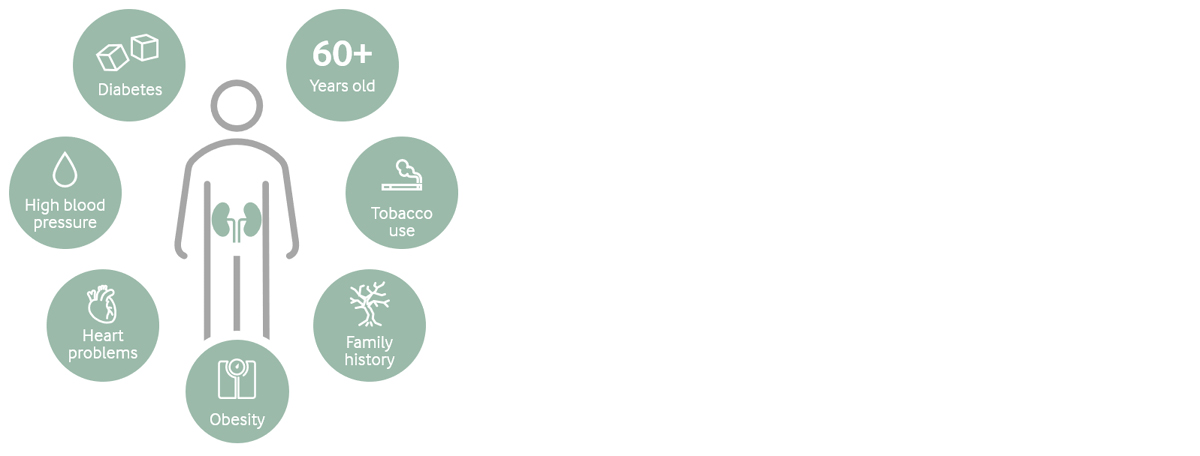Tackling the protein dilemma in a low-phosphorous renal diet
Chronic kidney disease (CKD) is estimated to affect more than 850 million adults worldwide1, a figure expected to rise. Causing a progressive decline in kidney function, it can eventually lead to end-stage renal disease, requiring regular dialysis or a kidney transplant.
The risk of CKD is greatest in adults aged 60 and above with type 2 diabetes and high blood pressure. Poor heart health, obesity, smoking and family history are other risk factors1 (Figure 1). More than 80% of patients who receive treatment for end-stage kidney disease are from affluent, developed countries with universal access to healthcare and a large elderly population2.
Figure 1. Risk factors associated with CKD 
As the disease progresses, the kidneys have a declining ability to both remove waste from the blood stream and maintain a healthy balance of water and minerals, such as phosphorous, sodium, potassium, calcium and magnesium. People who live with CKD experience increasing tiredness, loss of appetite and a range of other symptoms as a result.
Figure 2 shows the progression of the disease if not well managed.
Figure 2. Stages of chronic kidney disease

The dietary dilemma
A diet low in phosphorous and other minerals can contribute to delaying the progression of CKD. But this is not without challenge, as a diet low in phosphorous also implies a diet low in protein. People can then suffer from protein malnutrition, with negative impact on muscle mass and general health.
The BLG difference
Beta-lactoglobulin (BLG) is a whey protein with a natural difference. Comprising high-quality protein with a low content of phosphorous and other minerals, it has the ideal nutritional profile for combatting the protein malnutrition often associated with CKD.
Produced using patented technology for unprecedented purity, Lacprodan® BLG-100 is naturally high in essential amino acids, especially leucine, while containing just 12% of the phosphorous present in a standard whey protein isolate3. Consumed as part of a CKD diet, BLG may help reduce the harmful build-up of phosphorous while ensuring sufficient protein intake.
We have initiated several clinical studies to document the nutritional effect of BLG in people with varying stages of CKD.
Inspirational concepts
To support innovation within CKD nutrition, our application specialists have developed two inspirational concepts with Lacprodan® BLG-100
- A refreshing strawberry protein drink with 7% protein for CKD patients at stage 1 to 5 that are not in dialysis
- A blood orange-flavoured protein shot with 21% protein for CKD patients in dialysis, who are required to limit their fluid intake
Read more about Lacprodan® BLG-100, our low-phosphorous whey protein for renal diets.
Lacprodan® BLG-100 authorized as a novel food
As of 21 December 2022, Arla Foods Ingredients has received final authorization from the European Commission (EC) for its beta-lactoglobulin ingredient, Lacprodan® BLG-100.
The authorization states that Lacprodan® BLG-100 is safe and suitable to use in food products in the EU. The ingredient is suitable for a variety of applications within sports nutrition and in food for special medical purposes (FSMP).
Lacprodan® BLG-100 is Arla Foods Ingredients’ first product to receive approval under the new Novel Food Regulations (EU) 2015/2283.
References:
- Jager KJ et al. 2019. Kidney Int 96, pg. 1048–1050
- Adapted from the National kidney foundation, https://www.kidney.org/
- Compared to a current commercially available whey protein isolate in the Arla Foods Ingredients portfolio.







